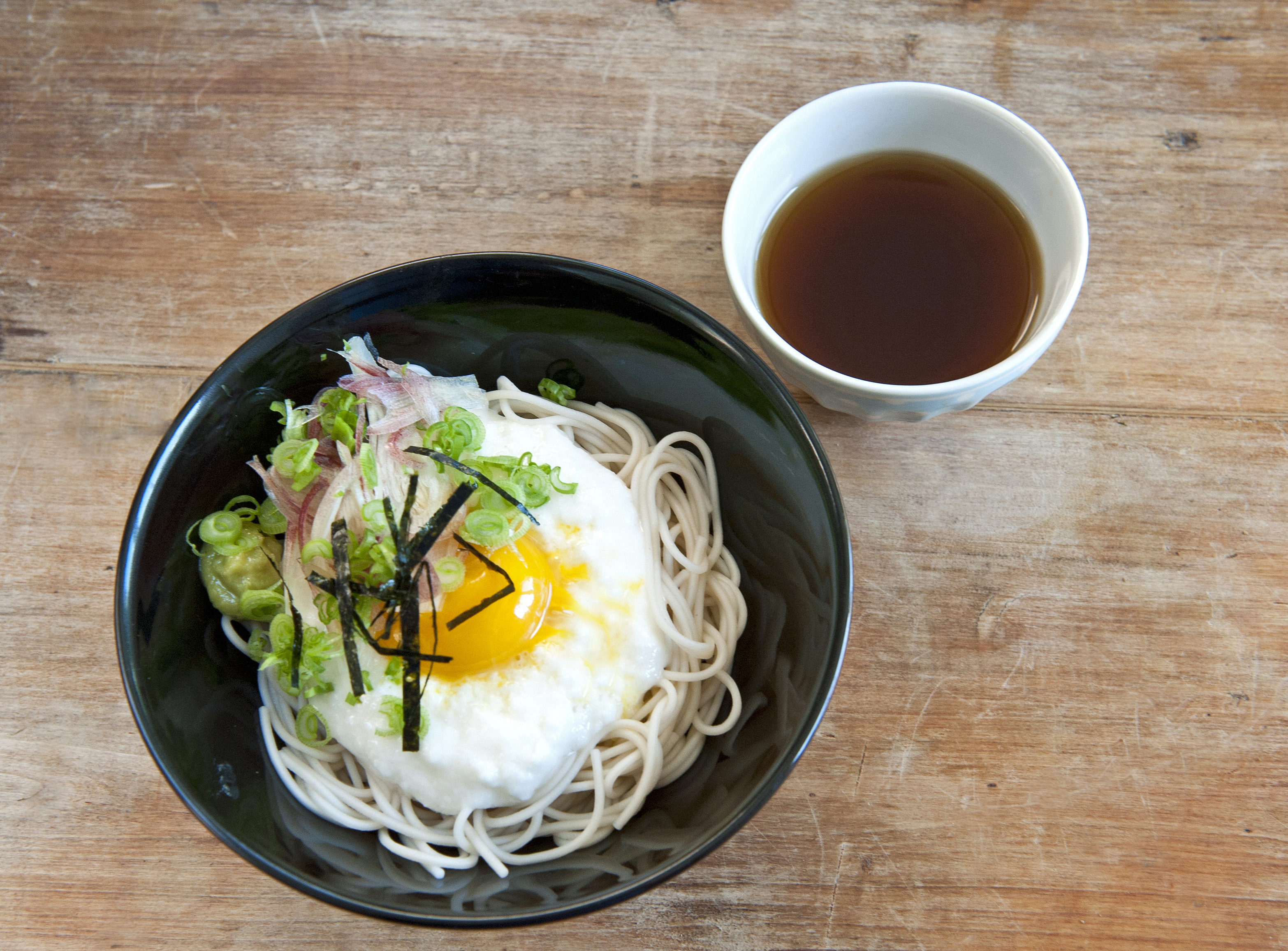Japanese have a fondness for slippery, slimy food that people from other food cultures often find puzzling. Sticky nattō (fermented soy beans), mozuku and tororo konbu (two kinds of slimy seaweeds) may take some getting used to, but once you do they can be quite addictive. In addition, these slippery foods are packed with many healthy qualities, including fiber, minerals and antioxidants.
One of the most slimy, slippery foods of all is the yamaimo, also called yamatoimo, jinenjo or Japanese mountain yam (the botanical name is Dioscorea japonica). Both the yamaimo and its close relative, the nagaimo or Chinese yam (Dioscorea polystachya), can be cooked, but in Japan they are usually eaten raw after being finely julienned or grated. The cool, slippery texture is especially appreciated in the summer, it makes food slide down the throat nicely. It tends to be easy to digest, too. Grated yamaimo is served in hot or chilled miso soup, over soba noodles or mugimeshi (a mixture of rice and barley), with nattō or cubed raw tuna and other ingredients. You can even buy frozen, ready-to-eat grated yamaimo or nagaimo at convenience stores.
The sticky texture of yamaimo is also useful when cooking. It gives karukan, a traditional sponge cake-like confection from Kyushu, its elastic-yet-airy texture, and has a similar effect on okonomiyaki, the popular savory pancake from Osaka.



















With your current subscription plan you can comment on stories. However, before writing your first comment, please create a display name in the Profile section of your subscriber account page.